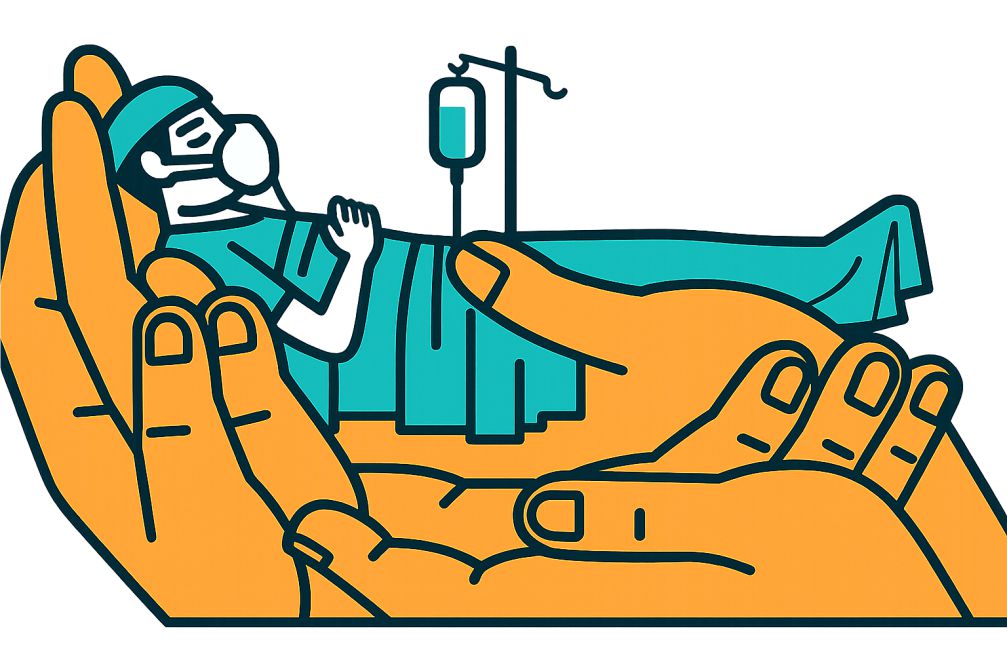From free outpatient treatment to expensive medical schools, India’s PPP healthcare initiative has the potential to make public health an expensive luxury for most.
WHILE various Indian states are in a hurry to privatize government hospitals on a Public-Private Partnership (PPP) footing, health policy experts and civil society organizations are raising an urgent question is this healthcare reform actually good for the public?
Spurred on by policy initiatives of the center and World Bank suggestions, Karnataka, Rajasthan, Uttar Pradesh, and Chhattisgarh are introducing PPPs in hospitals and medical colleges with the hope of more effective delivery of services and less government spending. Independent assessments and earlier case studies, however, cast significant skepticism on these hopes.
A SHIFT FROM PUBLIC TO PRIVATIZED CARE
Though India’s public health infrastructure is strained, particularly in rural regions, it continues to be the main source of treatment for millions. As per the National Sample Survey Office (NSSO) 75th round (2017-18), almost 46% of hospitalizations in rural areas and 35% in urban areas took place in government hospitals. For poor families, public facilities are generally the best option available, particularly for outpatient treatment.
The World Bank and NITI Aayog project that India will require another 3 million hospital beds by 2030 roughly 100,000 per annum to achieve basic healthcare needs. India currently provides just 5.3 beds per 10,000 population, much short of the WHO standard of 30 and World Bank’s 40.
With such pressure in view, some states have entered PPP arrangements with private firms, sometimes offloading decades-old hospitals and public property, hoping for private efficiency to plug the gaps. But the experiences of states such as Chhattisgarh, Gujarat, and Andhra Pradesh indicate that the outcomes have usually been disappointing and sometimes exclusionary.
THE CHHATTISGARH EXAMPLE & TROUBLING PRECEDENTS
In 2012, the Chhattisgarh government rented out a fully functional district hospital to a private firm for 30 years at a token rent. A later Comptroller and Auditor General (CAG) audit revealed serious operational shortcomings, such as denial of services to poor patients. Far from enhancing care, the PPP model in effect converted the hospital into a private establishment, fees charged for almost all services.
Such cases have given rise to sweeping fears that PPP healthcare reforms, as laudable as they are, can actually lower access to cheap healthcare, especially for uninsured poor patients.
Public Assets, Private Profits?
Most PPP hospitals are given government land, infrastructure, and even financing but fail to provide free or subsidized services on a regular basis to the public. Officially, it is agreed that a number of beds should be reserved for free treatment, but enforcement is poor or non-existent in many states.
Additionally, with the highest in Asia medical inflation rates of 12–14%, access to care is becoming increasingly unaffordable. Patients essentially pay twice: once as citizens when public hospitals are constructed and again as consumers when hospitals are run by private companies whose services are fee-based.
EROSION OF OUTPATIENT CARE
The PPP model has one significant disadvantage—the withdrawal of OPD services, which are absolutely essential for everyday healthcare and get utilized 2–3 times more than inpatient care. Most PPP hospitals deal with inpatient admissions only, which are reimbursable under insurance programs, while OPD consultations are either no longer free or unavailable. This deprives a huge majority of the population especially the poor of low cost first-contact care. And though schemes such as Ayushman Bharat can pay for hospital stays, they don’t make up for this essential deficit.
DATA SPEAKS FOR ITSELF
The same NSSO report (2017-18) revealed the following:
- Government hospital stay: Rs. 4,452
- Private hospital stay: Rs. 31,845
- In urban areas, the gap was even more: Rs.5,135 (govt) vs Rs. 41,239 (private)
Now that PPP hospitals begin to charge similar to private hospitals, this affordability gap is closing not by lowering costs, but by increasing the cost of care in erstwhile public hospitals.
MEDICAL EDUCATION: A GROWING CONCERN
PPP measures have also spread to medical education. New medical colleges in Uttar Pradesh, Rajasthan, Gujarat, and Karnataka, set up under PPP, are demanding between Rs12–16 lakh annually for MBBS seats. New policy relaxations enable private colleges to set fees for as many as 75% of their seats, pricing out middle-class candidates and potentially exacerbating public doctor shortages.
Even AIIMS type institutions are being proposed now under PPP, raising an alarm that elite healthcare and medical education will soon become a preserve of the wealthy.
MODELS THAT WORKED: PUBLIC SYSTEMS THAT DELIVER
States like Kerala and Himachal Pradesh, that have invested in building their own govt health infrastructure instead of outsourcing, have much improved public health indicators. Andhra Pradesh, on the other hand, which has registered a 10% increase in private hospital share since 2013, is an example to learn from of increasing unaffordability.
A REFORM THAT NEEDS REFORMING
India’s PPP model of healthcare requires expansion less than it requires accountability. The guarantee of greater efficiency and coverage cannot be at the expense of universal access and equity. If public hospitals, constructed with public funds, are transferred without assurances of free care or stringent monitoring, the outcome is not reform it’s privatization of public duty.
The success of this reform will ultimately be measured, not in number of beds, but in number of individuals who are able to afford to lie in them.

